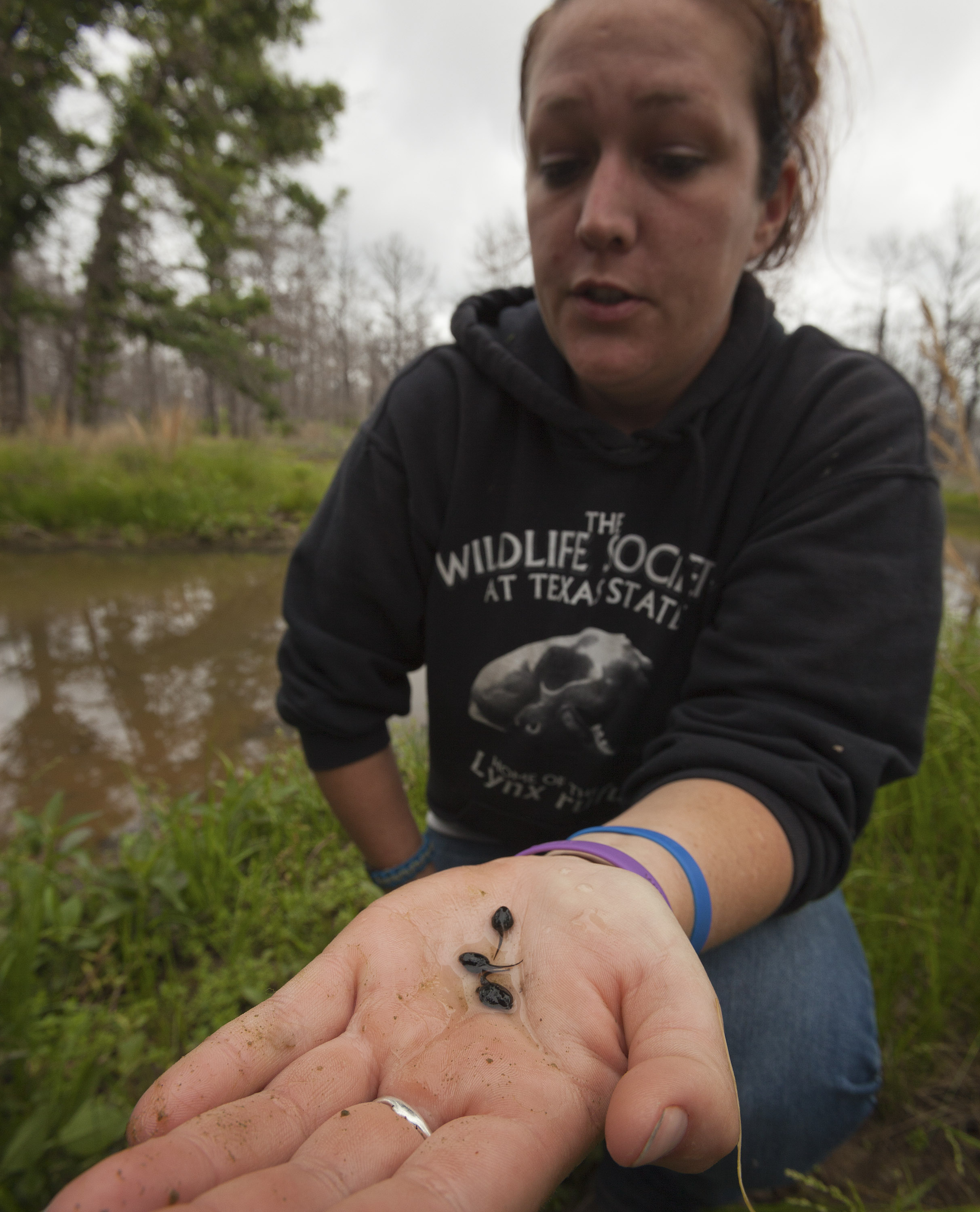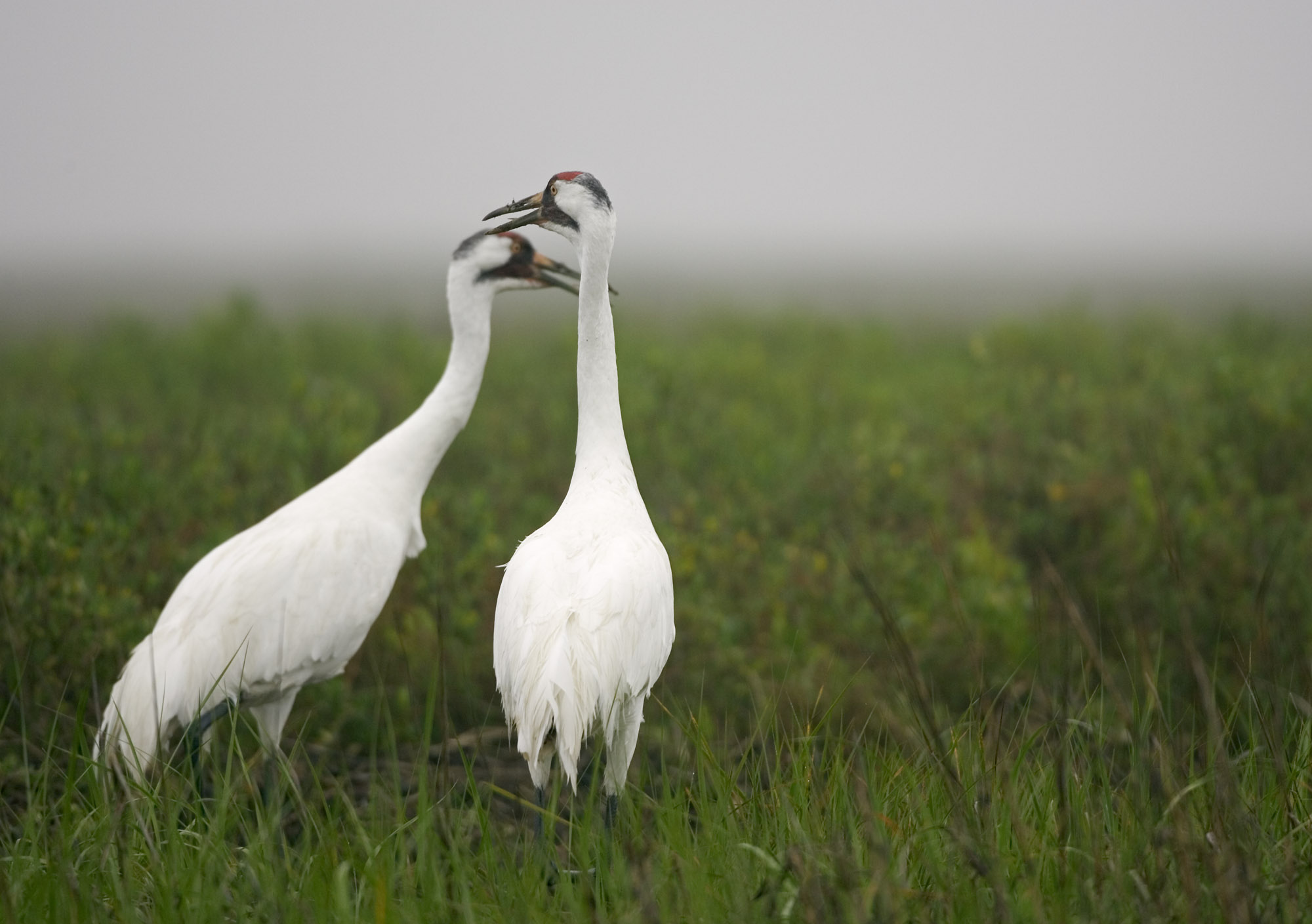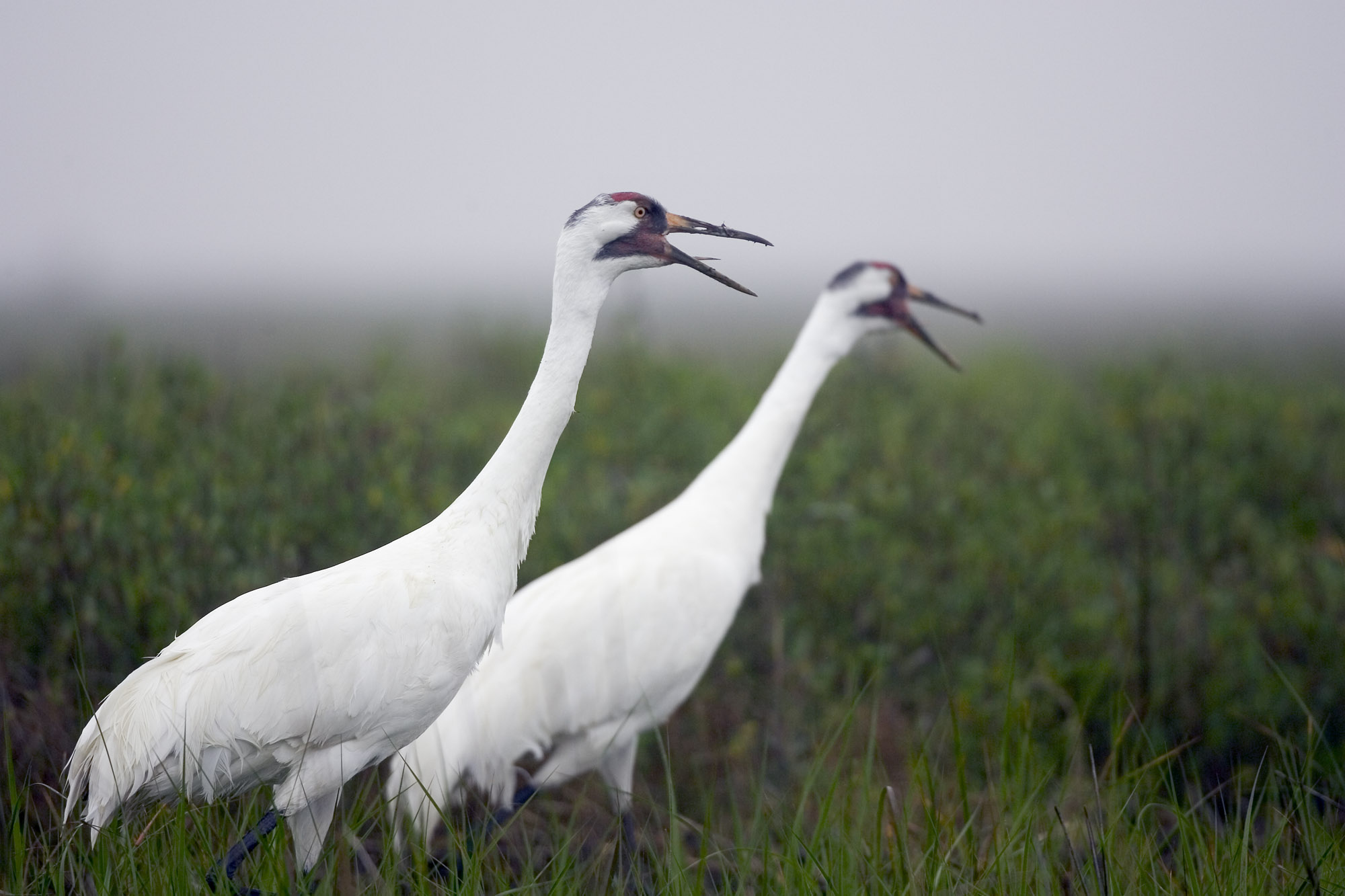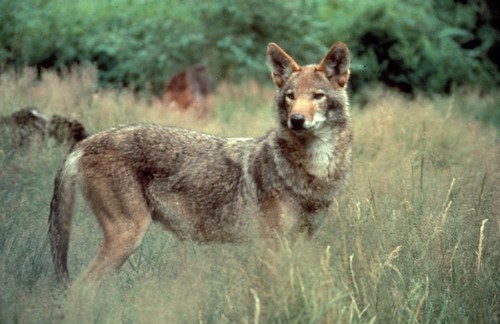Conservation: Houston Toad Recovery, 2
Thursday, June 6th, 2013
Houston Toad Tadpoles, Image by Earl Nottingham, © Texas Parks and Wildlife Department
This is Passport to Texas
Recent drought and wildfires could have spelled the end for the endangered Houston Toad, which exists in and around Bastrop State Park.
05—A few months after the wildfire in Bastrop County, our surveys documented very few toads during that first breeding season.
This had wildlife biologists like Greg Creacy worried about the status of the remaining population. But a recent survey found more breeding toads than they had a right to expect after such devastation.
11— It’s puzzling, and we’re continuing to do research with collaborators like Texas State University. And we’re learning more about the species with every passing year, and we hope to have answers to those questions soon.
Using a “head start” program Creacy harvested egg strands from breeding areas – post fire – raised them to tadpole stage, then released them where they were found. While it gives them a higher survival rate…
27—We have noticed that the toads that we have found since the wildfire, typically do not weigh as much as they usually do. The eggs that they’re laying are smaller. So it appears that physiologically they’re not as in good health as they normally are. But you have hope that over time this will change? Yes. They’ve gone through a very difficult time with the drought and the subsequent wildfire, but we are optimistic things will be improving soon.
That’s our show. The Wildlife and Sport Fish Restoration program program supports our series, and is funded by your purchase of fishing & hunting equipment and motorboat fuel.
For Texas Parks and Wildlife…I’m Cecilia Nasti.






 Passport to Texas is a
Passport to Texas is a  Passport to Texas is made available by:
Passport to Texas is made available by: